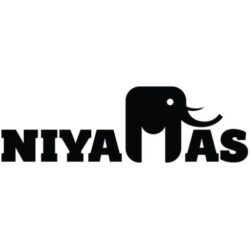Iyengar Yoga Tradition

Body is my first Prop, the famous teacher of Hatha Yoga, BKS Iyengar said.
Yoga is for all. I designed props so that all can benefit from it.
Body is my first prop.
B.K.S Iyengar
What Iyengar, Guru of Yoga meant was that the Body is the first prop to reach the soul that resides within.
He separately emphasized that just like you keep the temple or any place of worship clean, it is your duty to keep the body clean while your soul resides in it.
The system of this spiritual Indian teacher is known as the Iyengar Yoga Tradition.
His method is a type of Ashtanga yoga focusing on the correct alignment and precision of the body.
To achieve it he used straps, blocks, blankets and other objects as aids to achieving the correct postures.
In his practice, Guru engineered a number of props to help students who had limitations to their body or suffered from various chronic ailments. With his method enable them to achieve certain Hatha Yoga postures.
As he said: Yoga teaches us to cure what cannot be endured and endure what cannot be cured.
How is Iyengar different from other types of yoga
Iyengar Yoga is focusing on the structural alignment of the physical body through the practice of asanas.
It differs from other styles of yoga in three ways: precision, sequence and use of props.
- Precision is sought in body alignment in every asana.
- The sequences in which asanas are practiced is considered important in achieving the desired result.
- Iyengar Yoga led the use of props, designing suitable means to assist practitioners.
 Yoga blocks or bricks in Iyengar Yoga Tradition
Yoga blocks or bricks in Iyengar Yoga Tradition
A yoga block or brick is one of the most popular yoga props Iyengar used.
Yoga props were used as tools to support the body to allow a deeper expression of a yoga pose’s alignment.
They are often used as an extension of one’s hands, but are also used to support the back, head and hips, and to deepen awareness of alignment.
Υoga blocks can be helpful for all yogis, not just beginners. They can help stabilize and add height in standing and balancing poses. They are also ideal for adding lift or grounding, that’s why blocs are recommended to new students and those experiencing injury or other physical limitations.
In addition, more advanced practitioners can utilize props to safely learn new challenging poses.
These brick-shaped props are the most popular among the yoga accessories because you can never “outgrow” them.
Yoga blocks help progress your practice and provide confidence and assistance when exploring new poses and deeper angles.
Yoga blocks or bricks can be used in many different ways and they can add a lot of benefits to your yoga practice.
You can use the blocks to:
- bring the floor closer to you for support
- increase your balance
- give you confidence while exploring new pose variations, and more!
Yoga blocks, like yoga mats, come in a variety of materials and sizes. Each type provides its unique benefit and purpose.
Next time you take a class at a yoga studio and see a variety of blocks, try them out so you can learn which one is suitable for your practice!
Yoga straps or yoga belts in Iyengar Yoga Tradition
 Another useful prop for Iyengar yoga style is what we call yoga strap or yoga belt.
Another useful prop for Iyengar yoga style is what we call yoga strap or yoga belt.
Yoga straps are suitable for extending and deepening reach in yoga postures and nowadays they are using in most styles of yoga classes.
Mainly used to extend and lengthen reach, there are countless ways to use a yoga belt to enhance your yoga postures.
Yoga straps help you achieve deep stretching without the risk of injury or pulling any muscles and help you maintain full range of motion.
If you are new to yoga or trying to master complex positions, a quality yoga belt can bridge the gap between where you are and where you want to be.
It helps you maintain proper form and spinal alignment while reducing the risk of overstretching and injury in your practice. Yoga straps are ideal to support you so you can hold your Yoga poses with confidence. They are also perfect for beginners to connect in basic poses.
It helps bridge the gap for those that don’t yet have the flexibility and will help you increase your flexibility over time.
Iyengar Yoga became an institution with the 1975 founding of the Ramamani Iyengar Memorial Yoga Institute in Pune. A further major step was the founding of the first of many institutes abroad, the Iyengar Yoga Institute in Maida Vale London, in 1983.
Iyengar has found passionate supporters all around the world and thousands of people benefits from his method.
For me, yoga props are not only for the asana.
It should contribute to the position of the body which in turn can let the mind be calm and state of ‘chitta vritti nirodha’ be experienced.
Body is my first prop. The body is a prop to the soul.
B.K.S Iyengar
Find out our collection of Yoga Blocks, Belts and Yoga Mats to fully support your Yoga practice.
Namaste!
